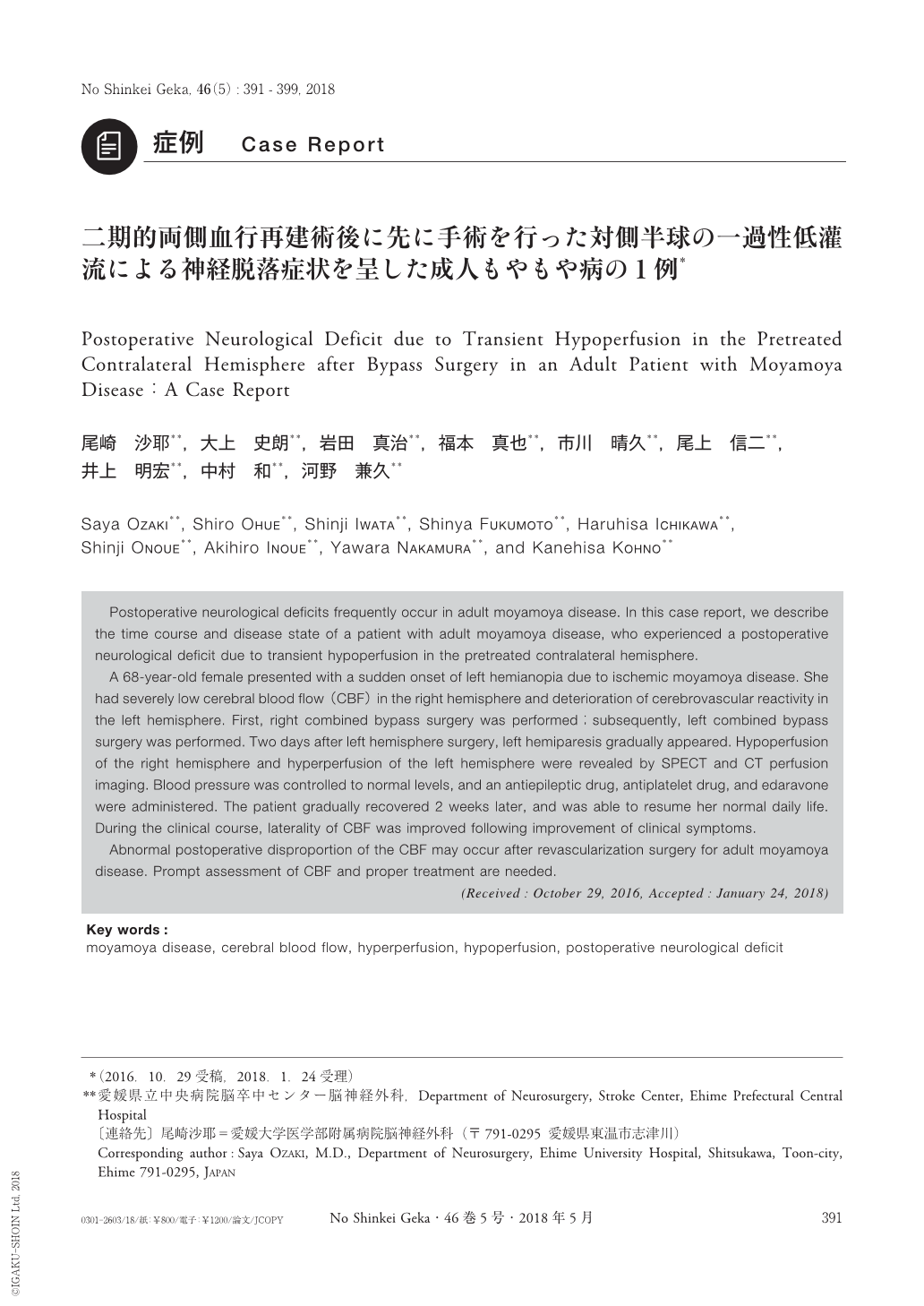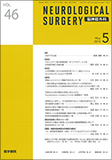Japanese
English
- 有料閲覧
- Abstract 文献概要
- 1ページ目 Look Inside
- 参考文献 Reference
Ⅰ.はじめに
もやもや病は内頚動脈終末部および前・中大脳動脈近位部が進行性に狭窄・閉塞し,周囲に異常血管網の発達を認める疾患である.治療として浅側頭動脈(superior temporal artery:STA)-中大脳動脈(middle cerebral artery:MCA)bypassを含む血行再建術が行われるが,術後急性期に神経脱落症状の変動が比較的高頻度にみられる.特に60歳以上の高齢もやもや病患者では直接血行再建術後の過灌流の頻度が高いが,厳格な降圧管理中に脳梗塞を生じることもあり,周術期管理には細心の注意が必要である6).
今回われわれは,虚血型もやもや病に対する二期的両側血行再建術後に,はじめに血行再建術を行った側の低灌流による神経脱落症状を呈した症例を経験した.術後経過および病態について,文献的考察を含めて報告する.
Postoperative neurological deficits frequently occur in adult moyamoya disease. In this case report, we describe the time course and disease state of a patient with adult moyamoya disease, who experienced a postoperative neurological deficit due to transient hypoperfusion in the pretreated contralateral hemisphere.
A 68-year-old female presented with a sudden onset of left hemianopia due to ischemic moyamoya disease. She had severely low cerebral blood flow(CBF)in the right hemisphere and deterioration of cerebrovascular reactivity in the left hemisphere. First, right combined bypass surgery was performed;subsequently, left combined bypass surgery was performed. Two days after left hemisphere surgery, left hemiparesis gradually appeared. Hypoperfusion of the right hemisphere and hyperperfusion of the left hemisphere were revealed by SPECT and CT perfusion imaging. Blood pressure was controlled to normal levels, and an antiepileptic drug, antiplatelet drug, and edaravone were administered. The patient gradually recovered 2 weeks later, and was able to resume her normal daily life. During the clinical course, laterality of CBF was improved following improvement of clinical symptoms.
Abnormal postoperative disproportion of the CBF may occur after revascularization surgery for adult moyamoya disease. Prompt assessment of CBF and proper treatment are needed.

Copyright © 2018, Igaku-Shoin Ltd. All rights reserved.


